Regarding the impact on water purification plants from the nuclear accident to date
Immediate impact on water purification plants following the nuclear accident (conceptual diagram)
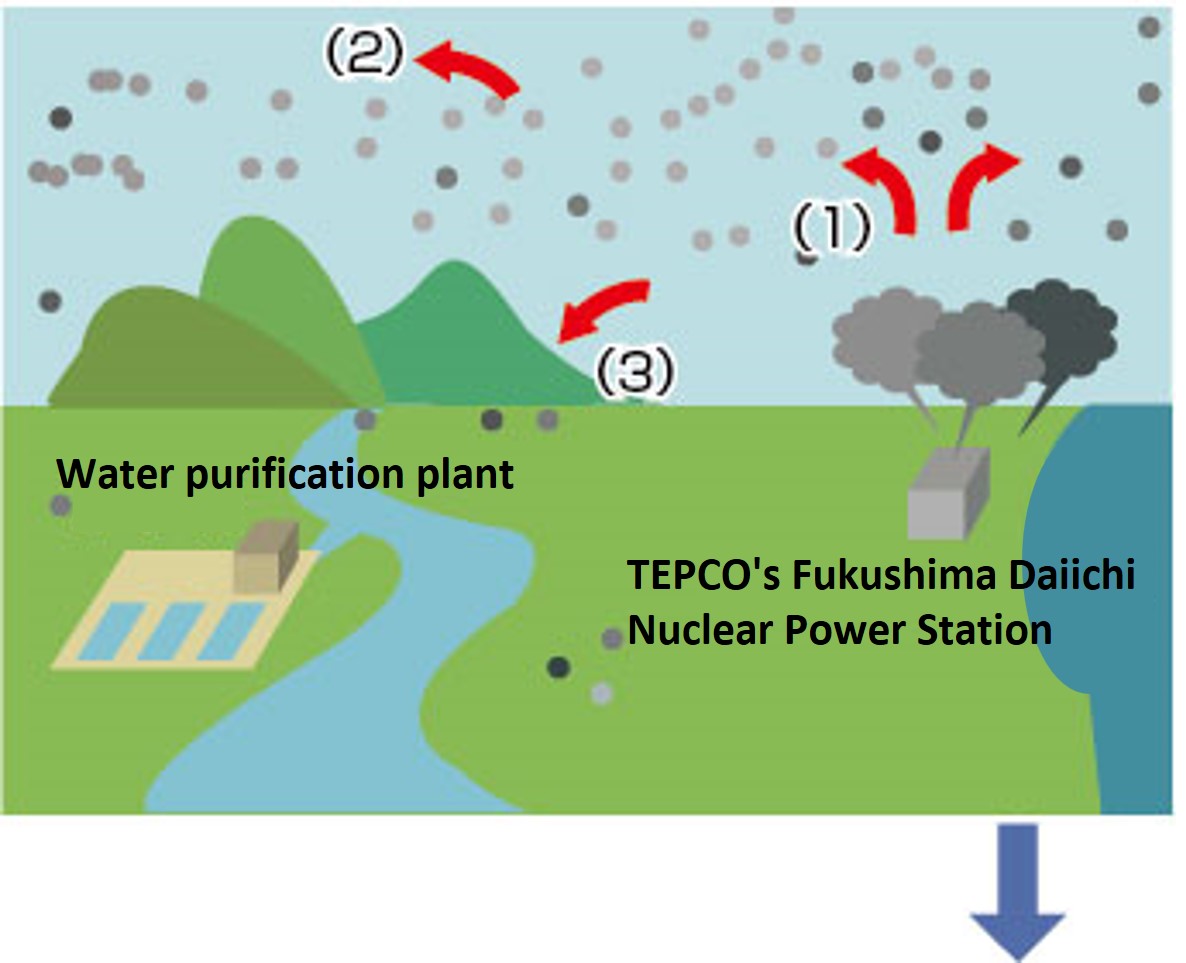 |
- (1)
A large quantity of radioactive materials were released into the atmosphere from TEPCO's Fukushima Daiichi Nuclear Power Station for a relatively short period of about 10 days.
- (2)
The released radioactive materials, mainly volatile compounds, dispersed and spread through the air by wind flow.
- (3)
Some of the dispersed radioactive materials settled on the surface of the ground (dry deposition).
|
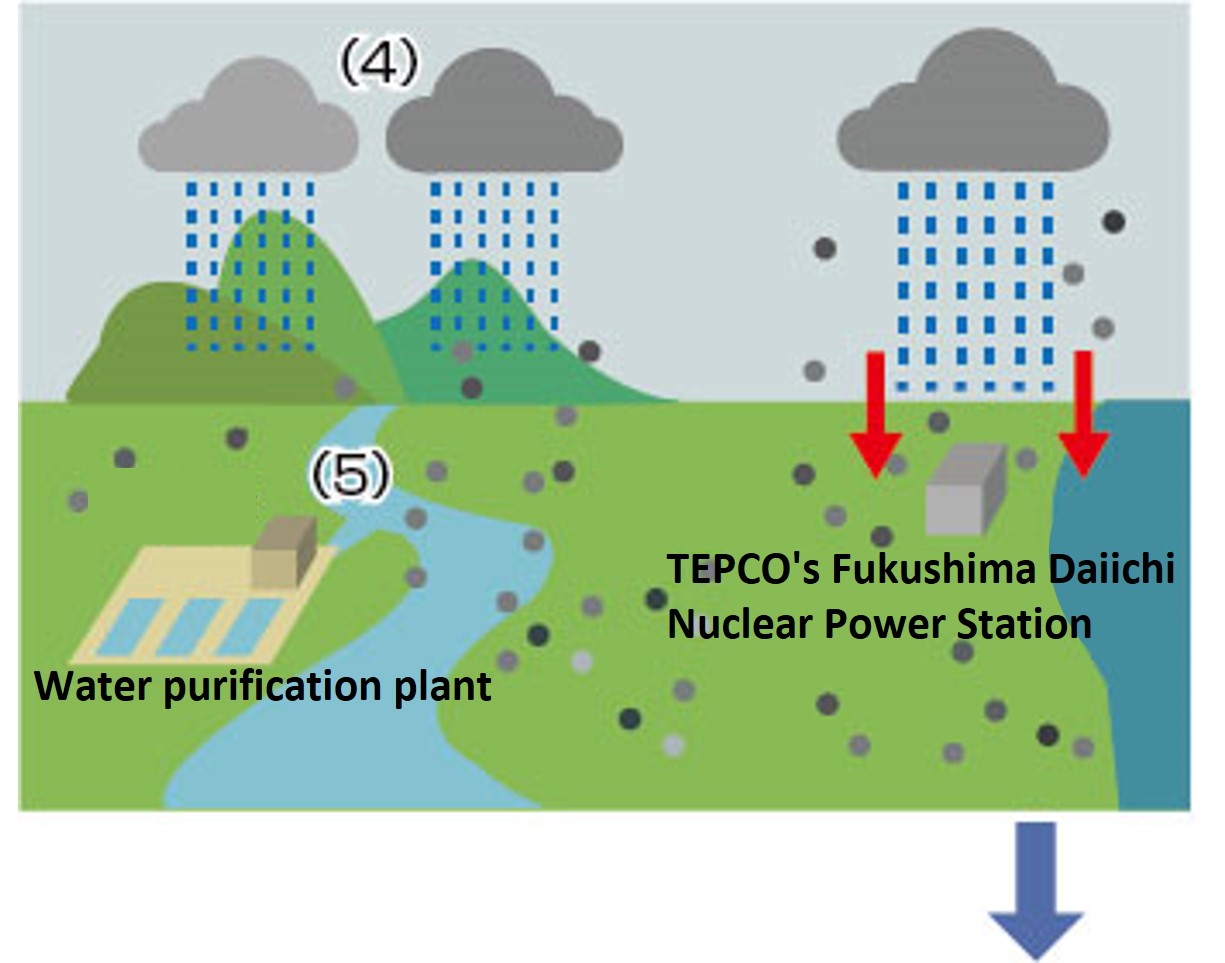 |
- (4)
A significant amount of radioactive materials in the atmosphere was deposited onto the ground surface due to rainfall during the approximately 10-day period following the accident (wet deposition).
- (5)
Radioactive materials settled on the ground surface through both dry and wet deposition were washed into rivers along with rainwater.
|
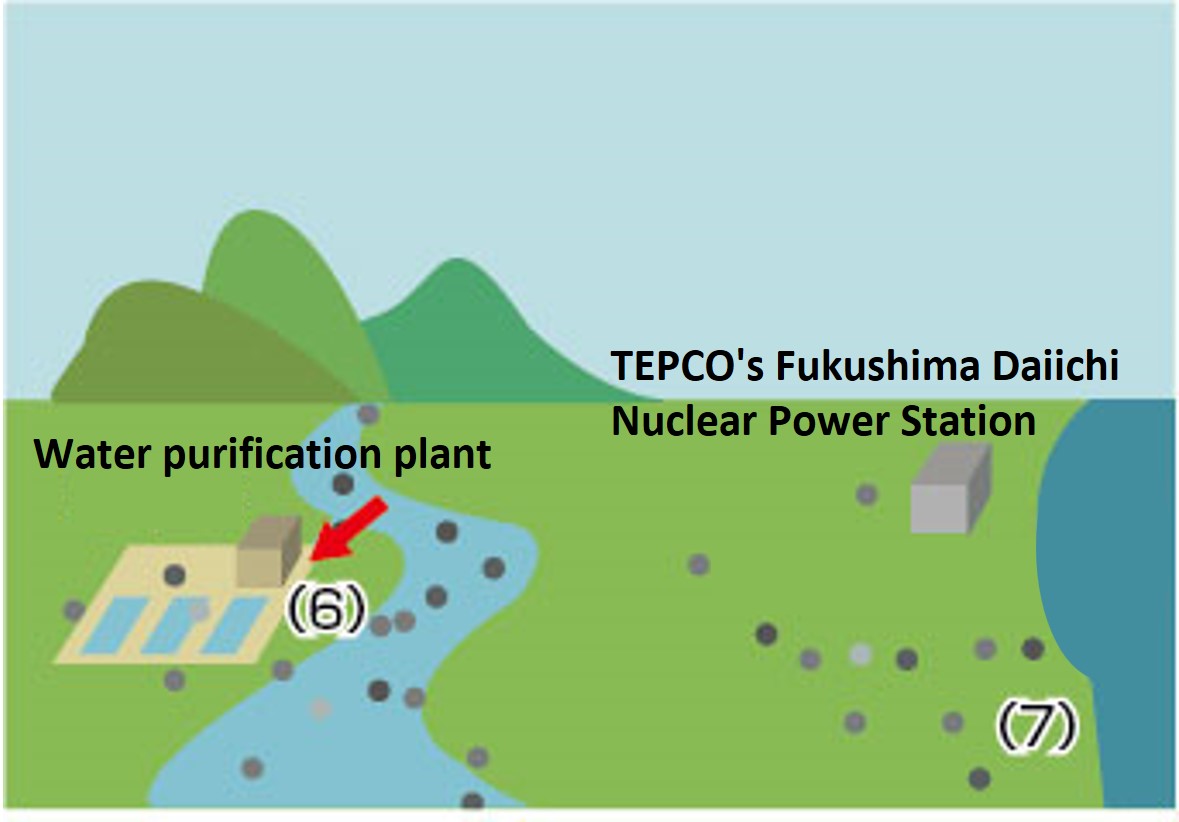 |
- (6)
River water containing radioactive materials flowed into water intakes of water supply sources. Radioactive materials were detected in some plants and water taps of certain water suppliers.
- (7)
Radioactive materials settled on the ground surface adhered to and remained in soil. Radioactive cesium, in particular, does not easily penetrate underground but remains in the upper layers of the soil.
|
Impact of significantly reduced release of radioactive materials from the nuclear power station (conceptual diagram)
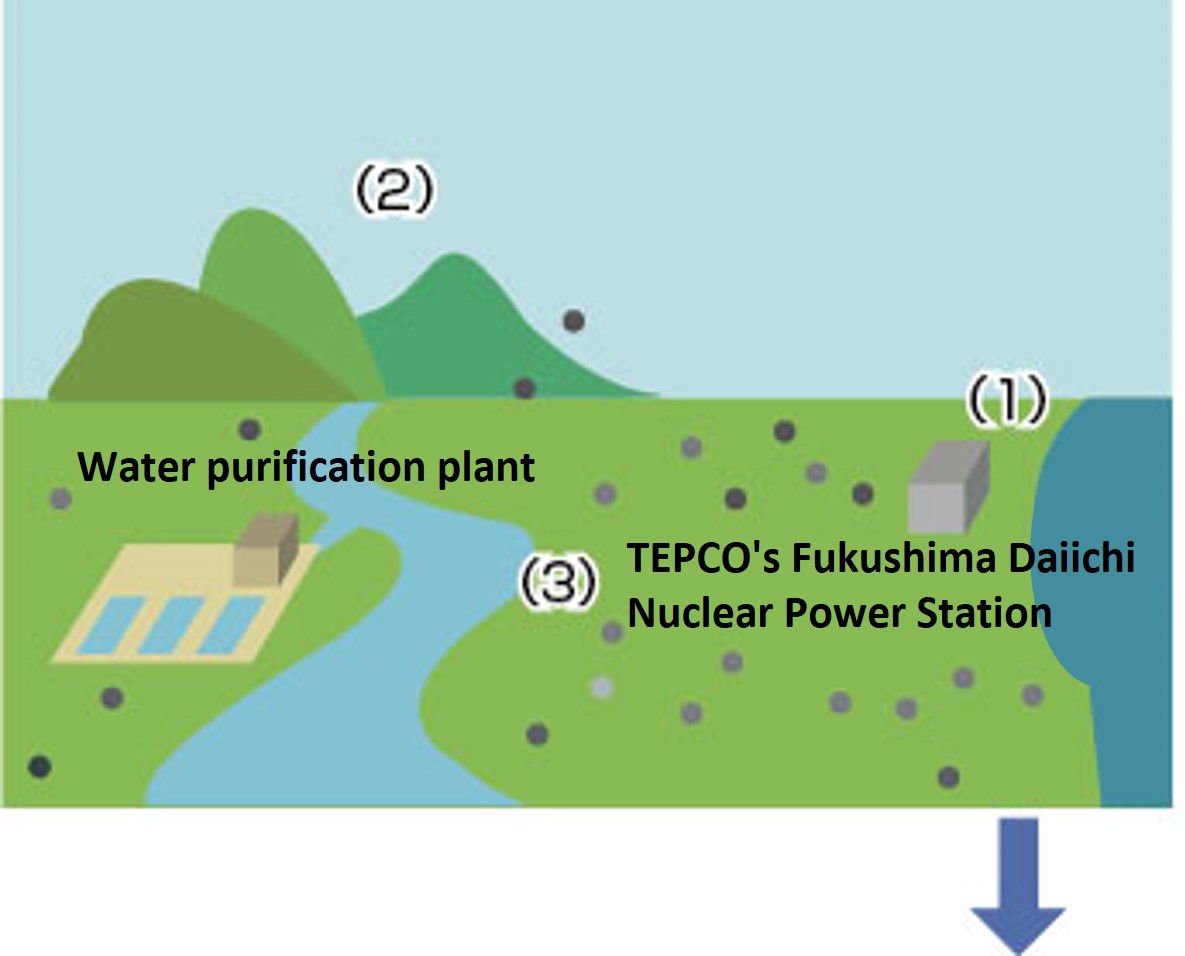 |
- (1)
The amount of radioactive materials released from TEPCO's Fukushima Daiichi Nuclear Power Station has significantly decreased compared to the immediate aftermath of the accident.
- (2)
Air dose rate and fallout have generally been reduced. Other than the neighbouring areas of Fukushima Prefecture, radiation levels have returned to normal ranges.
- (3)
Radioactive cesium deposited on the ground surface has adhered to the soil, remaining in the upper layers of the soil without easily penetrating into the ground.
|
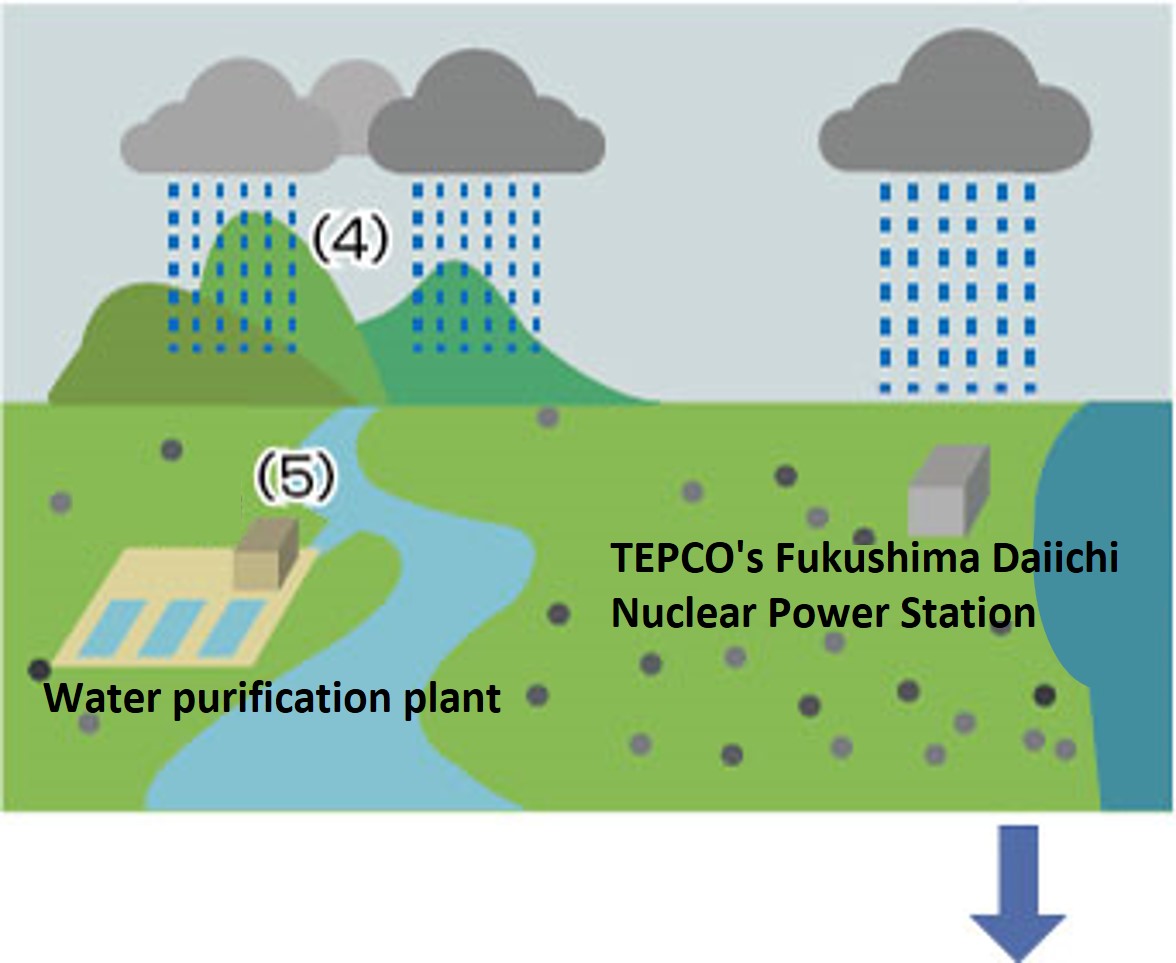 |
- (4)
As radioactive materials released into the atmosphere immediately after the accident has already been reduced by rainfall about 10 days after the accident, subsequent rainfall had only a minimal impact.
- (5)
During heavy rainfall, there is a possibility that the upper soil layers, where radioactive cesium is adsorbed, could be washed into rivers along with rainwater and potentially enter water supply sources as turbid components.
|
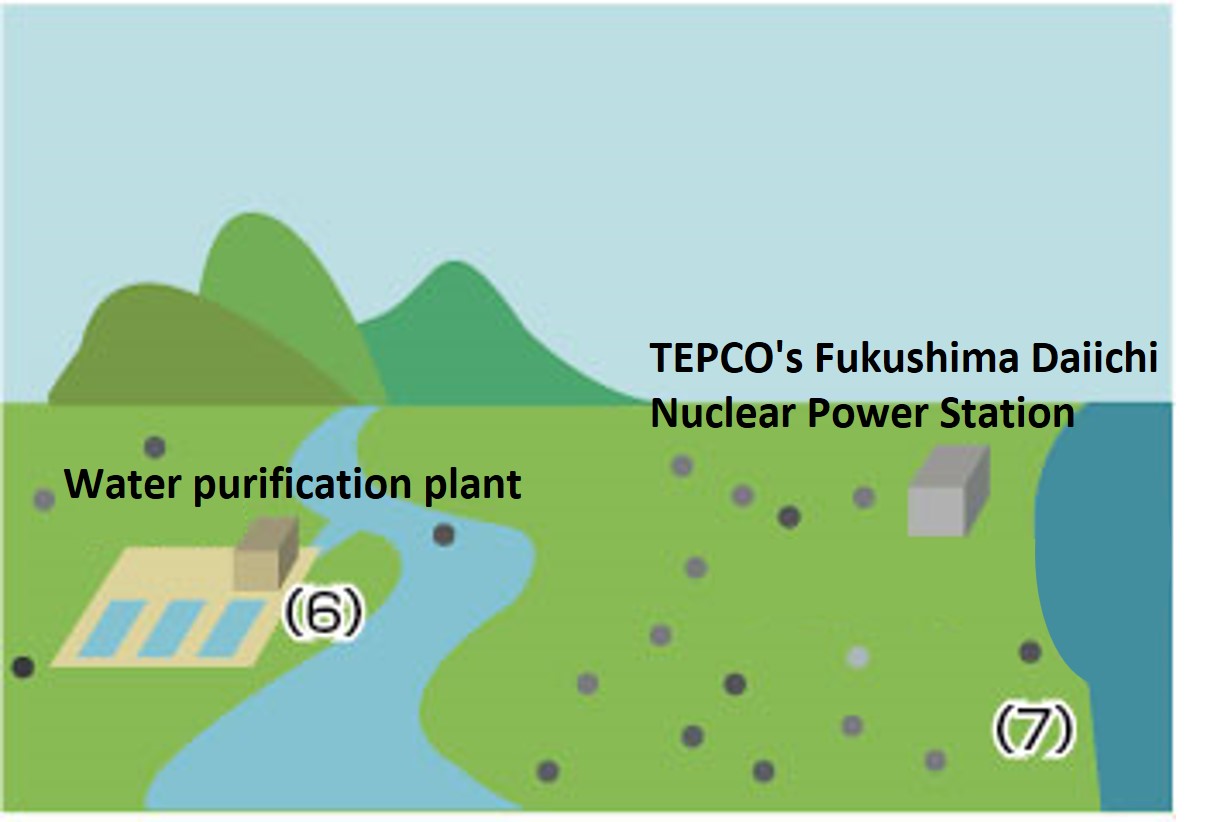 |
- (6)
Even if radioactive cesium enters water supply sources, it can be effectively removed along with turbid components through stringent turbidity control measures and water treatment processes such as coagulation sedimentation and sand filtration in water treatment facilities.
- (7)
Radioactive cesium settled on the ground surface has adhered to soil, remaining in the upper layers of the soil without easily penetrating into the ground.
|

PDF形式のファイルをご覧いただく場合には、Adobe社が提供するAdobe Readerが必要です。
Adobe Readerをお持ちでない方は、バナーのリンク先からダウンロードしてください。(無料)










